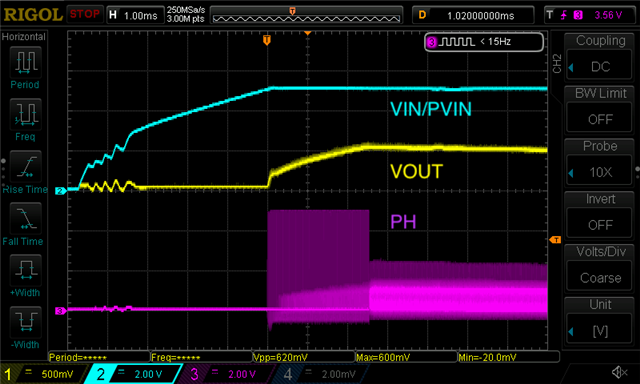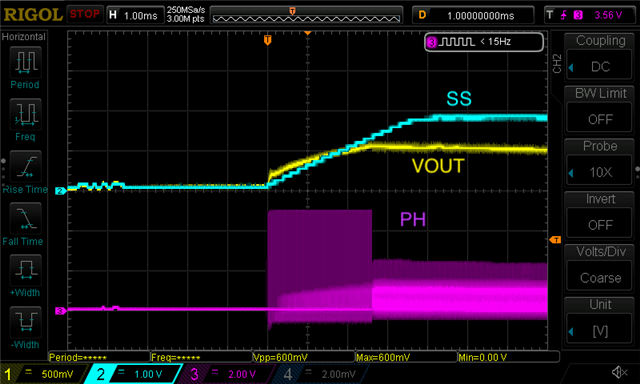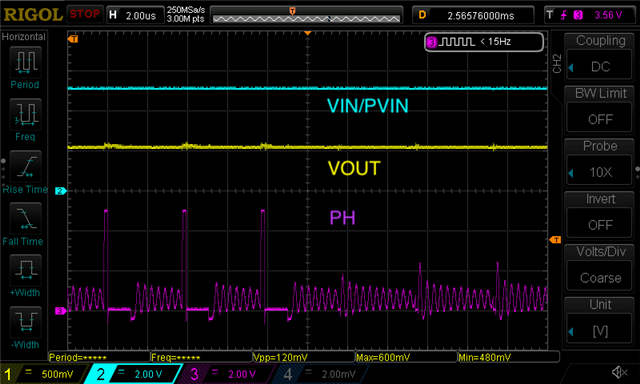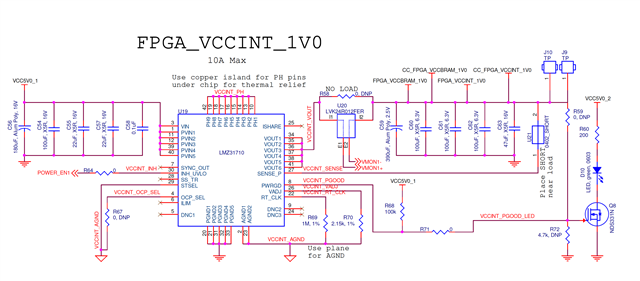Hi -
Anyone else ever have a problem where the switch node (PH) stops switching and the regulator won't fully come up to voltage?
I'm making VOUT = 1.0V from VIN = 5.0V and after about 2.5ms, VOUT is only about half-way up to 1.0V and the PH node stops switching and VOUT decays back to zero. After this, there is no hiccup-mode restart or any other attempt at coming up to voltage. VIN is solidly at 5.0V with no sag or undervoltage. SS looks normal. INH is enabled (high) the whole time and doesn't sag or anything. I also checked VSENSE and it looks fine. This voltage powers VCCINT on a Xilinx FPGA.
Here are some scope traces that show VOUT only coming up to 0.5V, PH stops switching, while VIN is solid and SS is normal :


Here is a zoom-in at the point that PH stops switching :

Here is the schematic :

In the scope traces above I tried removing C59 to see if a smaller output load capacitance would help but it didn't. With C59 included, VOUT actually shot up to > 1.0V very quickly (in about 0.2ms it went to 1.5V) and PH stopped switching at the same point as seen above (~2.5ms). I have these scope traces if it would help debug.
We made a batch of these boards and some of them have this startup problem while some of them work fine - VOUT comes up to 1.0V in the expected ~1.2ms and PH switches as expected.
Any idea why the PH node would stop switching and never try to startup again? Or why some boards would work and some don't? Or anything else to try?
thanks,
Chris

